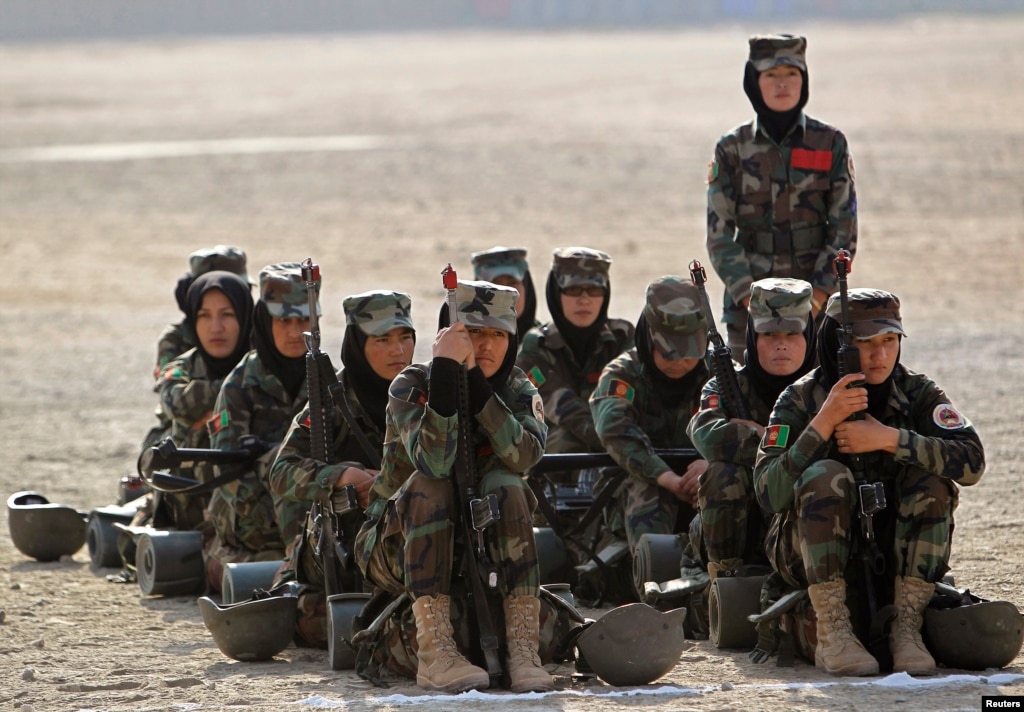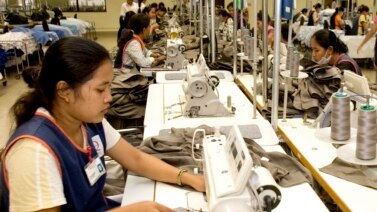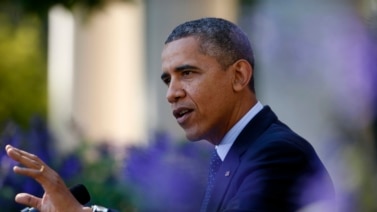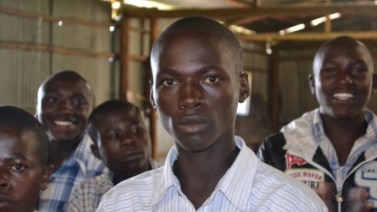
Hello, I’m Faith Lapidus in Washington.
Today on As It Is, we hear about new efforts to protect rice crops from flooding.
Afghan-US Security Agreement Still Not Clear
But first, we look at security concerns in Afghanistan. The country’s president has called a meeting to discuss a planned security agreement with the United States. We have more on that story, coming up.
President Hamid Karzai says there is no hurry to sign the agreement. His comment has raised questions about the future of American troops in Afghanistan after the planned withdrawal of NATO forces next year.
President Karzai has passed the difficult question of signing the security agreement with the United States to a council of elders, or loya Jirga. The president says the group plans to meet next month. He dismissed concerns that the meeting will delay a decision on the agreement.
John Wood is with the Near East South Asia Center for Strategic Studies. He says there are two main areas of conflict between the Afghan leader and American officials.
“As I understand it, Mr. Karzai wants a very specific external security agreement or assurance, frankly something that would probably rise to the level of a treaty agreement in the eyes of the United States.”
Such an agreement would push the United States to protect Afghanistan from foreign aggression. John Wood says this is a direction the Obama Administration would not be likely to take. He notes the opinion is his own, and not necessarily that of his organization. Mr. Wood says President Karzai has his own concerns over American demands.
“The other sticking point, I believe, still revolves around the degree of autonomy that US Special Operations Forces might have, or the CIA may have, to continue to operate independently and with no oversight or prior approval of the Afghan government.”
Last week, the Afghan leader criticized the United States and NATO forces for carrying out air raids and other operations in his country. He said such actions violate Afghanistan’s territorial independence in the name of fighting terrorism. He said he would never permit that under the proposed Bilateral Security Agreement, or BSA.
“If the United States and its NATO allies continue to demand that even after signing of the BSA they will have the freedom to attack our people, our villages, the Afghan people will never allow them that.” Afghan experts warn that not having an effective agreement to support Afghan forces after international forces leave could empower the Taliban and other militants. Hamidullah Farooqi once served as Afghanistan’s foreign minister.
“The Taliban and the other armed forces against the Afghan government, they’re also seeing an opportunity for themselves that 2014, (the) international community is leaving, they might feel they are going to be able to capture again the political power.”
Mr. Farooqi believes open and successful presidential elections next April and a stronger Afghan government will stop gains by militants.
Until the end of last month, Ashraf Ghani Ahmadzai was a member of the Afghan team negotiating with American officials. He told VOA that the security talks are considering the needs of every Afghan constituent group. He says the agreement is shaping into a very balanced, if not necessarily a long-term one.
“It is a fully worked out, detailed set of understandings between two governments. Second, the duration is 10 years. Three, each government has a process for changing the agreement. So it’s not that this government is binding the future government categorically.”
But some observers and citizens of Kabul are worried. They say the Taliban is moving quickly into more villages across the country. And one former Afghan military official said the country’s army is losing more and more soldiers to desertion.
You are listening to As It Is, from VOA Learning English. I’m Faith Lapidus.
Flood-Proofing Rice
Crop scientists from around the world met in the Philippines last week at the International Rice Research Institute. They exchanged ideas on how to keep flooded rice and other crops alive for long periods. June Simms has more in this report from Simone Orendain in Los Baños.
Scientists have already found a way for several kinds of rice to live after being completely covered in water for more than 10 days. About five years ago, farmers in the Philippines, Indonesia and several South Asian countries started growing rice that had been crossbred with a gene called “SUB1.” The gene stops the plant from growing while it is under water, to protect itself.
Abdelbagi Ismail is a scientist at the International Rice Research Institute. He says close to 25 million hectares of rice is lost to floods in Asia and Africa every year. There are about 150 million hectares of rice worldwide.
With one seventh of the total crop lost, Abdelbagi Ismail says researchers want to find a way to make flooded rice survive for longer periods.
“Now SUB1 can protect up to two weeks, but sometimes we get floods up to 25 days. So we lose it even with SUB1. So we want to see if we can increase flooding tolerance by more than one week- additional to SUB1. So any information that comes from these studies could help us.”
The International Rice Research Institute is now directing its attention on three areas. The scientists want to help flooded rice sprouts continue to grow normally. They also want to look for other genes that do what SUB1 does. And they want to produce plants that can survive total and partial flooding in soil that never completely drains during the rainy season.
Laurentius Voesenek is with Utrecht University in the Netherlands. He is working to identify qualities that help plants deal with flooding. His work is on ethylene, a gas released by plants once they are covered with water.
“Gases produced by the plant can only very slowly escape. So if production continues it builds up and that is a very reliable signal for the plant to know ‘I’m under water. I’m in trouble. I have to do something. Switch on genes which might protect.’”
Scientists are also sharing work on crops in standing flooding. Mr. Ismail says this is important to learning about what will help farmers use the wet soil of flooded fields for other crops such as maize, wheat and barley. I’m June Simms.
And that is As It Is. I’m Faith Lapidus in Washington. Thank you for listening.
Have a question or comment about our show? We would love to hear from you. Send your e-mail to us at learningenglish@voanews.com.
Stay with VOA for world news at the top of the hour, Universal Time.





